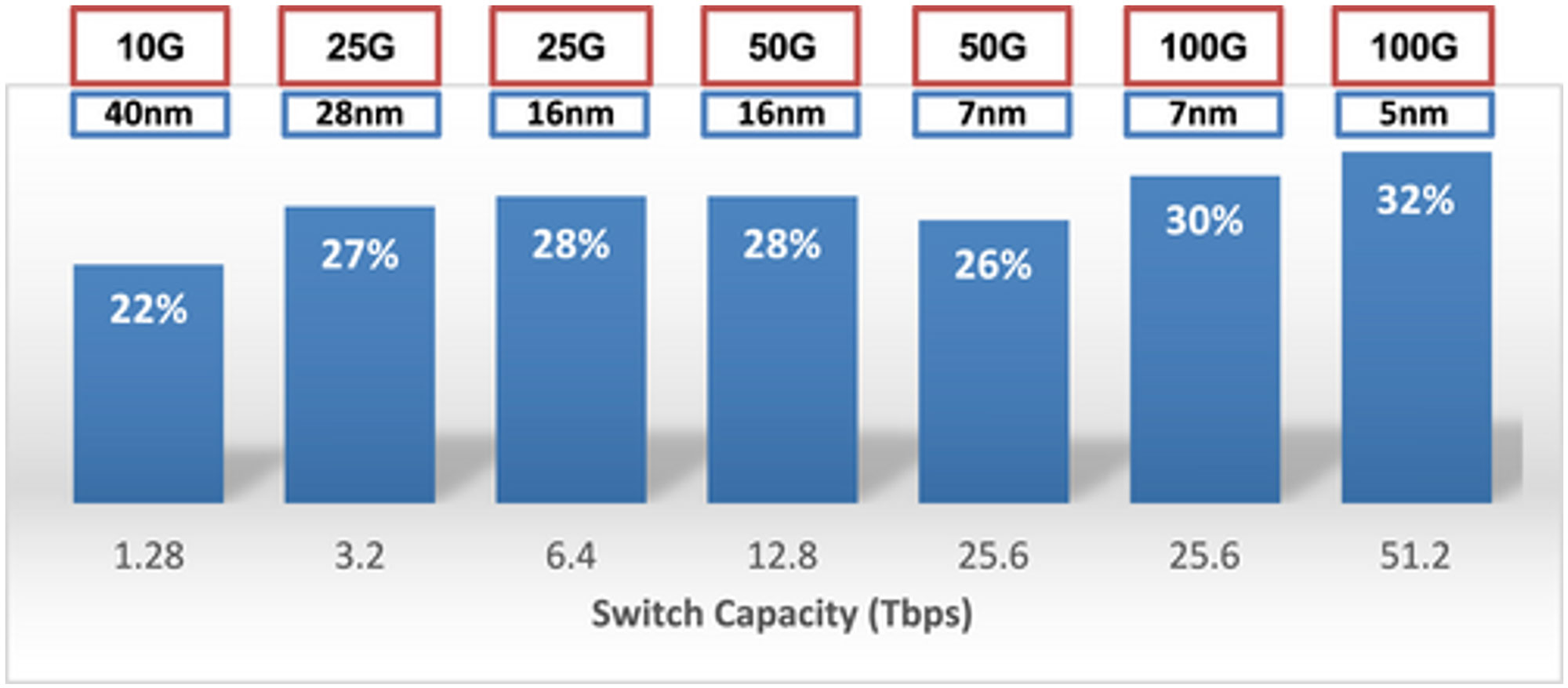Application Study: Data Center Optical Modules
Background
According to IET Research, "The main challenge of pluggable modules is power. At the heart of the issue lies the inevitability of mounting signal integrity challenges in the electrical channels between ASIC and modules. This has been driving up power dissipation on the modules as well as the switch ASIC."
Their figure below shows how power dedicated to the serdes has evolved by generation.
Further citing the IET Research article,
while advanced DSP chips may enable next-generation 400G and 800G transceivers based on 100G electrical serdes it still implies that a 51.2 T switch will draw around 1 kW just for the optical modules. An important constraint in this respect is the power delivery and cooling infrastructure at the rack level, which imposes an upper bound on the total power dissipation of the switch.
The single largest contributor to transceiver power is the electrical channel between the module and the switch ASIC. With increasing signaling rates, the electrical losses on this channel have been mounting. The shorter the electrical channels and the fewer transitions (bumps, balls, vias, connectors), the more manageable the signal integrity problems become, which motivates moving the optics inside, as close to the switch ASIC as possible.
Endura Technologies Solution
A leading supplier of DSP chips for optical modules has approached Endura Technologies to help address these challenges, as Endura Technologies’ power delivery architecture is ideal for these applications.
Endura Technologies’ modular digital control and use of advanced semiconductor process technology enables industry-leading efficiencies and high-speed switching for smaller footprints. This scalable architecture ranges from standard power management devices (sVR) to embedded (eVR
™) chiplets down to on-chip, integrated (iVR) blocks for optimum point-of-load energy delivery.
High-speed switching (up to 150 MHz) means Endura Technologies’ eVR and iVR technologies are small enough to be placed very close to where the power is needed, which enables improved system performance.
Benefits
Besides the benefits of high efficiency, eVR and iVR enable point-of-load power delivery at/near the switch ASIC and modules, thus minimizing electrical channel routing overheads and losses, which improves signal integrity, minimizes heat generation, and lowers cooling requirements.
 Source: IET Research
Source: IET Research